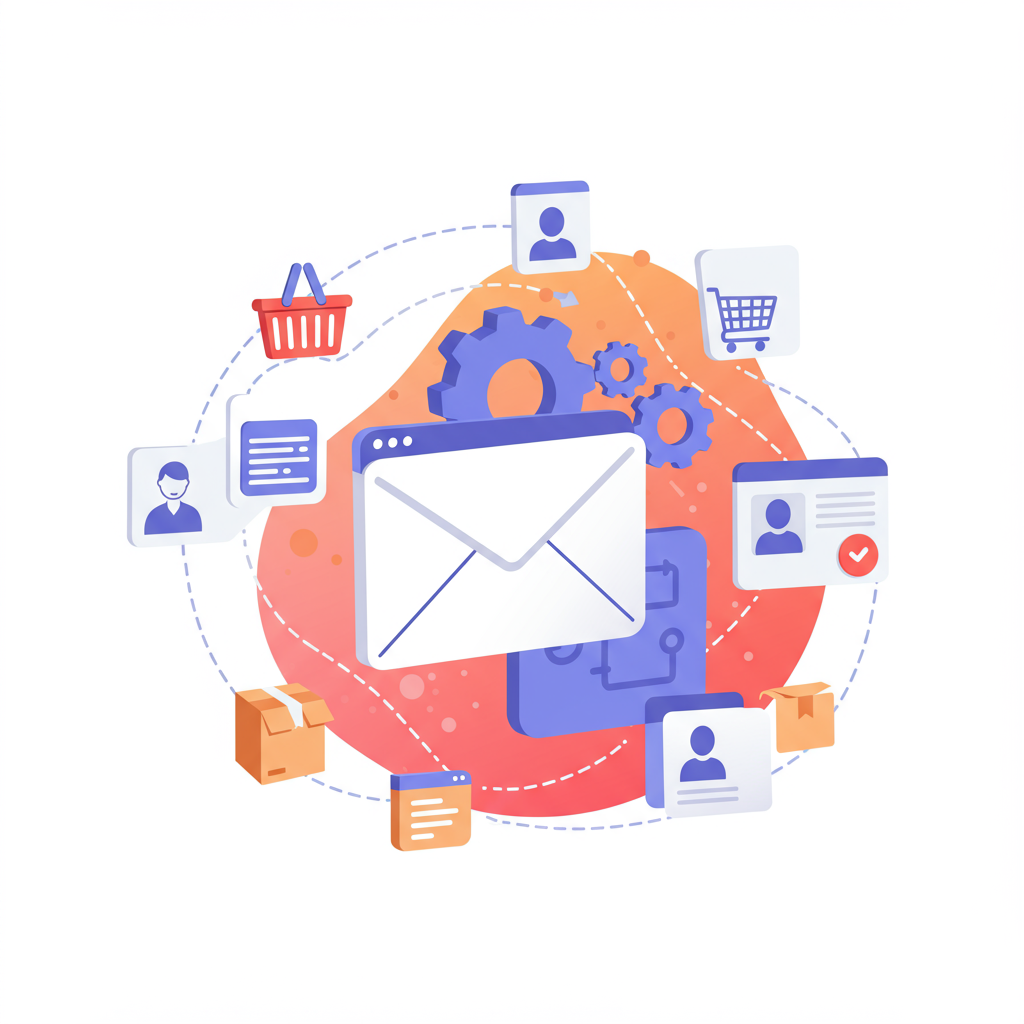Unlock unparalleled growth and customer loyalty with advanced email strategies for your Shopify store.
As a Shopify merchant, you’re constantly seeking ways to connect with your customers and drive sales. In 2026, the landscape of e-commerce is more competitive than ever, making direct communication channels like email not just important, but absolutely essential for sustained growth.
Manual email sending is a relic of the past. For true scalability and efficiency, email marketing automation is your most powerful ally. It allows you to deliver timely, relevant messages without lifting a finger after the initial setup.
By 2026, customer expectations for personalized experiences are at an all-time high. Generic blasts simply won’t cut it. Our focus today is on leveraging advanced automation to create hyper-personalized journeys that convert and build lasting loyalty.
First, let’s talk tools. While Shopify Email offers a solid native solution, many merchants find greater flexibility and advanced features with dedicated platforms like Klaviyo, Mailchimp, or Omnisend. The key is seamless integration with your Shopify store.
Ensure your chosen platform syncs deeply with Shopify, pulling in crucial data like purchase history, browsing behavior, customer segments, and product information. This data is the fuel for your automation engines.
The welcome series is your first impression. For new email subscribers, I recommend a 3-5 email flow. The first email should thank them and offer a small incentive, like a discount code, for their first purchase.
Subsequent emails in the welcome series can introduce your brand story, highlight best-selling products, share customer testimonials, or explain your unique value proposition. Keep it engaging and informative.
This is arguably the most critical automation for any Shopify store. Customers often abandon carts for various reasons. A well-timed series can recover a significant portion of lost sales.
I typically set up a 3-part abandoned cart flow: the first email within 1-2 hours (a gentle reminder), the second after 24 hours (perhaps with social proof), and the third after 48-72 hours (potentially with a small incentive).
Beyond carts, consider browse abandonment. If a customer views specific products multiple times but doesn’t add them to a cart, an automated email can remind them of their interest. This requires more sophisticated tracking.
Once a customer buys, the journey doesn’t end. A post-purchase series is vital. Start with a ‘thank you’ email, order confirmation, and shipping updates. This builds trust and excitement.
After the initial thank you, I like to introduce related products based on their purchase. If they bought a camera, suggest lenses or accessories. This is a prime opportunity for upsells and cross-sells.
Around 7-14 days after delivery, send an automated email requesting a product review. User-generated content is gold, and reviews significantly influence future buyers. Make it easy for them to leave a review.
Customers go dormant. Identify segments of customers who haven’t purchased in 60, 90, or 180 days. Send them a re-engagement series with compelling offers or new product announcements to bring them back.
Automate emails for your loyalty program members. Celebrate milestones, offer exclusive early access to sales, or provide special discounts. Make them feel valued and part of an exclusive club.
If you collect birth dates or customer anniversary dates (e.g., first purchase date), automate a special email with a personalized offer. It’s a small touch that can create a big impact.
In 2026, basic segmentation is not enough. Segment by purchase frequency, average order value, products purchased, last purchase date, engagement level, and even predicted next purchase.
Leverage dynamic content blocks within your emails. Show product recommendations based on past purchases or browsing history. Use their name, but go beyond that to truly relevant content.
Many advanced email platforms now offer AI-driven product recommendations. Integrate these into your automated flows to ensure the most relevant products are shown to each individual customer.
Consider integrating SMS into your automation flows for urgent messages like shipping updates or last-chance abandoned cart reminders. Ensure you have proper consent for SMS marketing.
Some platforms use predictive analytics to determine the optimal send time for each individual subscriber, maximizing open and click rates. This is a powerful tool for 2026.
Never stop testing. A/B test subject lines, email content, call-to-action buttons, images, and even the timing of your automated emails. Small improvements add up significantly over time.
Incorporate user-generated content, like customer photos or social media posts, directly into your emails. It builds social proof and authenticity, which resonates strongly with modern consumers.
Always ensure your email marketing practices comply with data privacy regulations like GDPR and CCPA. Transparency and clear opt-in/opt-out options are non-negotiable.
Regularly review your automation performance. Track open rates, click-through rates, conversion rates, and revenue generated by each flow. Identify bottlenecks and areas for improvement.
Email marketing automation is not a ‘set it and forget it’ task. It requires continuous monitoring, testing, and refinement to stay effective in the ever-evolving e-commerce landscape.
My advice to you is to start small, perhaps with the welcome and abandoned cart flows, and then gradually expand your automation strategy. The ROI on these efforts is often substantial.
I’ve shared my insights on mastering Shopify email automation for 2026. What do you think about this article? Are there any strategies you’re excited to implement or questions you have?
By embracing these advanced email automation tips, you’re not just sending emails; you’re building relationships, driving repeat purchases, and future-proofing your Shopify business for years to come.






